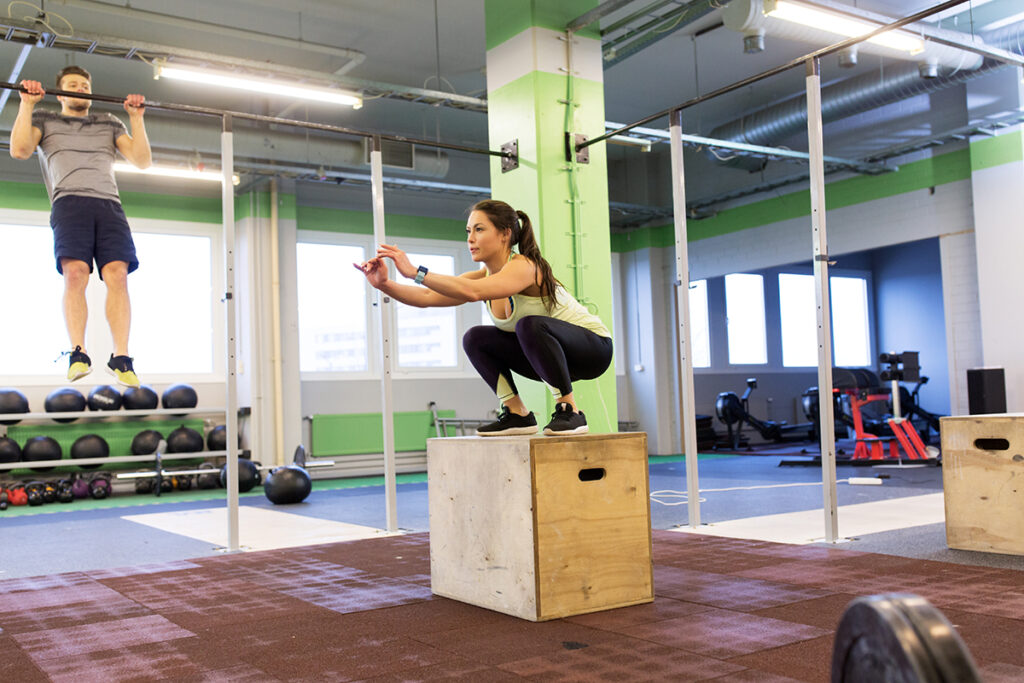
How Plyometric Training Helps in Injury Rehabilitation
Welcome to our physiotherapy blog, where we explore different approaches to injury rehabilitation and prevention. Today, we’re going to delve into the topic of plyometric training – a type of exercise that emphasises explosive and powerful movements. Plyometrics has gained popularity in recent years, particularly among athletes looking to improve their performance and recover from sports injuries. However, it can also be a valuable tool for anyone seeking to build strength, power, and agility. In this article, we’ll examine what plyometric training is, how it works, and how it can benefit for your injury rehabilitation and prevention. We’ll also provide tips on how to incorporate plyometrics exercises into your physiotherapy routine, whether you’re recovering from an injury or simply looking to boost your fitness level.
What is Plyometrics
Plyometric exercises are a series of explosive, powerful movements designed to increase strength, speed, power, and agility. It can significantly aid in the rehabilitation process for athletes recovering from sports injuries if incorporated at the right stage of rehabilitation. These exercises work by exerting a large amount of force over a short period, in a way that mimics the movements of sports and other physical activities.
The idea behind plyometric training is to develop the body’s ability to generate maximum force in the shortest amount of time possible, often referred to as “power.” By using high-intensity exercises that involve jumping, hopping, bounding, and other explosive movements, plyometrics can help improve athletic performance and reduce the risk of injury.
Plyometric training is based on the principle of the stretch-shortening cycle (SSC), which refers to the rapid eccentric (lengthening) contraction of muscles followed immediately by a concentric (shortening) contraction. This quick transition from eccentric to concentric contraction helps the muscles to generate more force, allowing for more explosive movements. The SSC is utilised in many sports and activities that require quick changes in direction or explosive movements, such as basketball, football, and sprinting.
Benefits of Plyometric Training for Injury Rehabilitation
Incorporating plyometric exercises into your training can have a variety of benefits for sports injury recovery and prevention:
Progressive Force Absorption:
Relearning how to absorb impact from explosive movements is crucial for a safe return to sports. Plyometric exercises allow athletes to progressively build up their impact capacity, minimising the risk of an injury resulting from inefficient force absorption.
Increased Muscular Power and Speed:
Plyometrics can enhance leg strength, force development rate, and delay muscle fatigue, resulting in improved vertical leaps, reaction times, and overall endurance. This can be particularly advantageous for athletes in sports that require quick bursts of speed or jumping ability, such as track athletes or basketball.
Enhanced Joint Stability:
Plyometric training has been shown to promote joint stability, particularly in the lower extremities, which is vital for athletes recovering from knee, ankle, or hip injuries. By improving joint stability, the prevention of future injuries in the same area can be increased.
Improves neuromuscular control:
Plyometric exercises can enhance the communication between the nervous and muscular systems, which is essential for coordinated movement and injury prevention. For example, single-leg hops can help improve balance and stability in the ankle joint after a sprain.
Promotes functional movement patterns:
Plyometric training can help athletes regain their ability to perform sport-specific movements after an injury. For example, lateral jumps can help basketball players recover their ability to change direction quickly and explosively after an ankle injury. Skater jumps can be used to improve lateral stability and coordination, which is essential for sports that involve side-to-side movements, such as basketball or soccer.
People Also Read: Rehabilitation for Hamstring muscle strain/tear; Is it safe to return to sport?
Integrating Plyometrics into Your Rehabilitation Programme
However, it’s important to note that plyometric training can be intense and puts significant stress on the joints and muscles. As such, it’s crucial to use proper technique, gradually increase the intensity and volume of the exercises, and ensure adequate recovery time between sessions. Working with a qualified physiotherapist or sports injury specialist is highly recommended to ensure safe and effective plyometric training. They can help design a personalised rehabilitation programme that addresses your specific needs and goals while also ensuring you progress safely and effectively as you make your way back to sports in a gradual manner.
Embrace the Power of Plyometrics with Rapid Physiocare’s Expertise
Recovering from a sports injury can be challenging, but incorporating plyometric training into your rehabilitation plan may pave the way for a faster, more effective recovery. It’s crucial, however, to work with professionals who understand your unique needs and can develop a safe and efficient programme.
At Rapid Physiocare, our experienced team of physiotherapists is ready to help you unlock the benefits of plyometric training for injury rehabilitation. We’ll assess your specific situation, create a customised plan, and provide the support you need throughout your recovery journey. Don’t let sports injuries hold you back – contact us today to get started on your path to a successful recovery.



